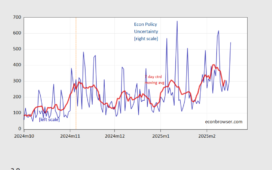Yves here. This post provides news you can use, even if of a grim variety. It provides practical suggestions on how to bolster physical and financial protection in climate change related extreme events, including fires.
Having said that, even some of these useful suggestions do not go far enough. An N95 will reduce smoke inhalation in a fire but will not assure adequate quality air for very long. I cannot find the product on Amazon, in a separate Internet search, or in my inbox, but years ago, a reader in comments recommended a truly fierce fire hood. Clear plastic, sat on the shoulders, with canisters that could assure air supply for over an hour, IIRC an hour and a half. I dimly recall it was also rated to hold up to a pretty high temperature. Said reader always carried enough for him and his family in the back of his car on long trips (and I assume then took it into his home). Again this was years back, and the price per hood then was $169 or $189.
Readers can likely recommend additional improvements to the lists below.
Jeff Masters also includes a set of maps showing the level of exposure to various climate risks, as well as grid outage frequencies. Can anyone point to similar maps for Europe, South America, and Asia?
By Jeff Masters, Ph.D., who worked as a hurricane scientist with the NOAA Hurricane Hunters from 1986-1990. In 1995, he co-founded the Weather Underground, and served as its chief meteorologist and on its Board of Directors until it was sold to the Weather Company in 2012. Between 2005-2019, his Category 6 blog was one of the Internet’s most popular and widely quoted sources of extreme weather and climate change information. Originally published at Yale Climate Connections
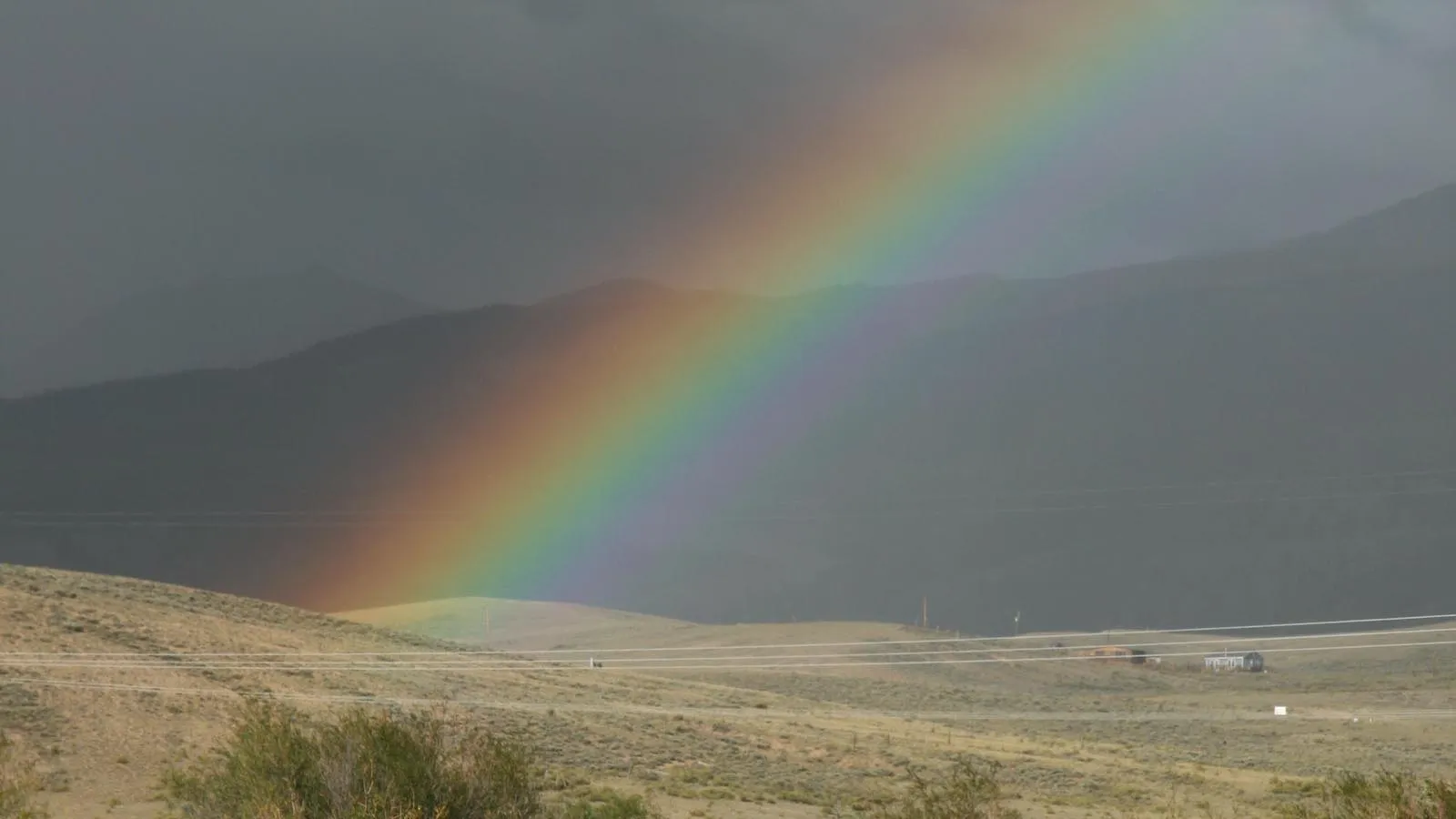
Like an approaching major hurricane whose outer spiral bands are only just beginning to hit, an approaching climate change storm has begun and will soon grow to ferocious severity — a topic I discussed in detail in my previous post, When will climate change turn life in the U.S. upside down? This immense tempest is already exposing the precarious foundations upon which civilization is built — an inadequate infrastructure designed for the gentler climate of the 20th century. What should you do to prepare?
On a personal level, you should prepare for the intensifying climate change storm like you would for an approaching major hurricane. If you’re going to stay in place, know your risk, get more insurance, stock up on supplies, weatherproof your home, be ready for long power outages (if you can, get solar panels with battery backup), keep extra courses of essential medicines on hand, and get your finances in order. And if you live in a sufficiently risky place, leave.
Consider Standing Your Ground
Moving to a new place strips you from the web of social connections in your community. As journalist Madeline Ostrander has observed, such ties help people cope during emergencies: “Sense of place, community, and rootedness aren’t just poetic ideas. They are survival mechanisms,” she has written.
So before you pack your bags, first make sure you understand the expected consequences of climate change where you live now. Do those risks outweigh the cost of leaving behind friends, neighbors, family, and professional contacts?
Get Insurance
If you decide to remain where you are, it is well worth it to increase your insurance coverage, despite the fact that insurance costs are rising rapidly. Even if you don’t live in a 1-in-100-year flood zone, flood insurance is a good idea for all property owners and renters. The National Flood Insurance Program will insure residential properties for up to $250,000 and the contents for an additional $250,000. Contact your private insurance agent to get a policy.
Defend Your Home Against Floods and Wildfires
An inch of water in your home can cause $25,000 in damage; check out FEMA’s suggestions on protecting your home from flooding. Some examples:
- Elevate the furnace, water heater, and electric panel if susceptible to flooding.
- Install check valves in sewer traps to prevent floodwater from backing up into your home.
- Point your downspouts away from your home to prevent pooling at the corners of your house.
- Regrade the area around your home so it slopes away from the house — even slightly.
- Plant native grasses and long-rooted perennials in your yard to soak up floodwaters.
- Seal walls in basements with waterproofing compounds to avoid seepage.
- Keep an adequate supply of food, candles, and drinking water in case you are trapped inside your home.
To protect against wind damage, consider the FORTIFIED construction method, a voluntary construction standard backed by decades of research, which your roofing contractor or builder can use to help protect your home against severe weather. FORTIFIED structures can qualify for insurance discounts.
The Department of Homeland Security also has guidelines on how to deal with wildfires. For example:
- Designate a room that can be closed off from outside air. Close all doors and windows. Set up a portable air cleaner to keep indoor pollution levels low when smoky conditions exist.
- Create a fire-resistant zone that is free of leaves, debris, or flammable materials for at least 30 feet from your home.
- Store an N95 mask to protect yourself from smoke inhalation.
If Necessary, Relocate
No place is safe from weather extremes that our rapidly changing climate will bring. But some places are foolish to continue living in. If you live in a flood plain, barrier island, or high wildfire-risk area where insurance impossible to obtain or very expensive, evacuate. Leave permanently. The insurance market is finally beginning to price climate risk appropriately, and it is sending you a message. Get out of your high-risk living situation and move somewhere safer — particularly if the government offers you a taxpayer-funded buyout. Like a high-stakes game of musical chairs, the music will stop for the coastal property market — perhaps even this year — and you don’t want to be the one left without a chair.
One of my favorite parts of the must-read 2024 book by Abrahm Lustgarten, “On the Move” (my review here), is where the author, who lives in a wildfire-prone portion of the California Bay Area, describes his angst about experiencing the new climate change reality there: skies turned orange by smoke, the constant tension of being prepared to evacuate, rolling blackouts that ruin perishable food, and increased insurance rates. He recounts a phone conversation he had with Tulane University’s urban planning and climate migration expert, Jesse Keenan, where Lustgarten asks him:
“Should I be selling my house and getting —”
He cut me off. “Yes!” came his emphatic reply.
Climate Havens
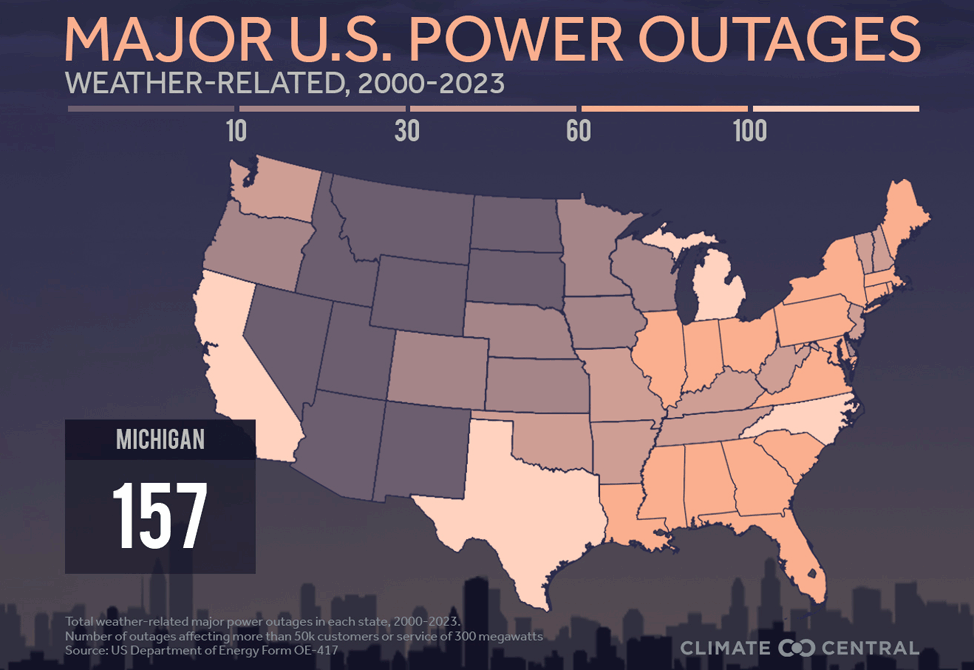
The most cited U.S. “climate havens” in research papers, publications by national organizations, and by the media are older cities in the Great Lakes region, upper Midwest, and Northeast. They include Ann Arbor, Michigan; Duluth, Minnesota; Minneapolis; Buffalo, New York; Burlington, Vermont; and Madison, Wisconsin. These locations have the advantage of cooler temperatures and abundant water resources. In addition, they are located far from the ocean coast, where hurricanes and sea level rise will be problematic, and well away from the worst wildfire smoke hazards areas of the West. Canada, Norway, Sweden, and Finland are also potential climate havens.
But some of these places may not be great places to move to if the government, city infrastructure, or social and economic conditions are flawed. For example, I like to tout my home state of Michigan as a climate haven. But Michigan has a poor electrical grid and suffers the second-highest number of power outages of any state, behind Texas — a much larger state (Fig. 1). Thus, it is good to consider the quality of the infrastructure of a state you are considering moving to.
Remember that no place is immune from the consequences of climate change. For example, many of the “havens” listed above experienced severe wildfire smoke in summer 2023. And new research on the critical Atlantic ocean current system known as the Atlantic Meridional Overturning Circulation, or AMOC, has found that it is more likely than not (59% chance) to collapse in the next 25 years. Over a period of decades following such a collapse, a major disruption to the atmospheric circulation would cause a dangerous increase in extreme weather a few decades from now over northern Europe, including the so-called climate havens of Norway, Sweden, and Finland.
If you can’t move to a climate haven or you prefer not to, you can aim to find someplace closer to home that minimizes the climate risks endemic to your area.
Flood Risk
It’s critical to know the current and future flood risk of any place you might want to live. Check out my 2023 post, 30 great tools to determine your flood risk in the U.S. If you live in Miami, New York City, New Jersey, Charleston, Norfolk, Houston, New Orleans, Houston, or the Florida Keys, check out my review of eight great books on flood risks in these places; for California, read the new 2023 book, California Against the Sea.
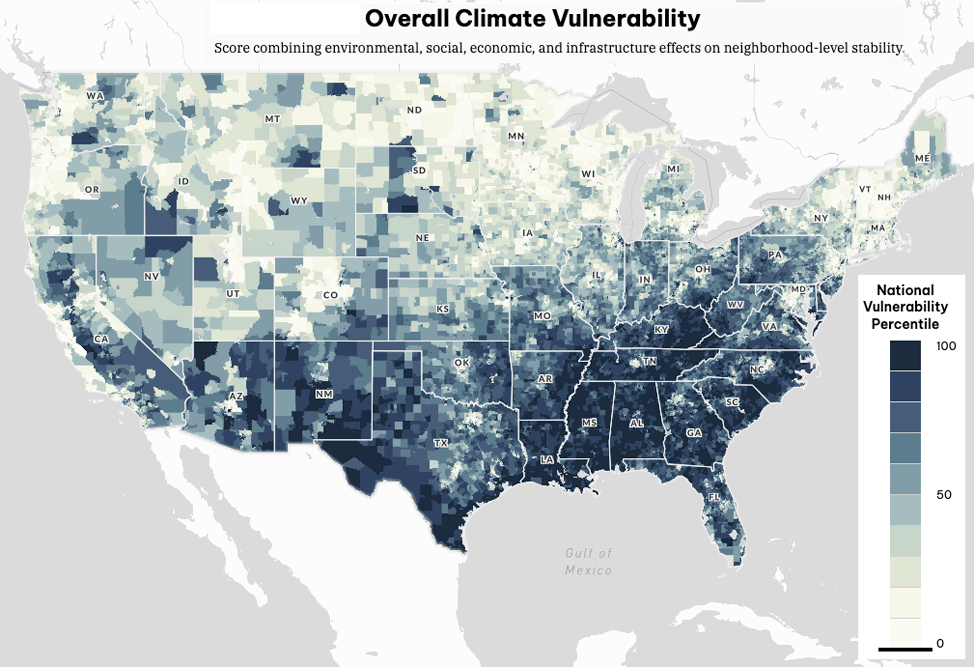
Interactive maps and other resources
One way to explore the pros and cons of living in a particular U.S. city is through the U.S. Climate Vulnerability Index. Created by the Environmental Defense Fund, Texas A&M, and Darkhorse Analytics, this features an interactive map to explore environmental, social, economic, and infrastructure effects on a city and county level. Grist did a nice write-up of the tool in 2023.
FEMA has an interactive National Risk Index for Natural Hazards map that shows which communities are most at risk from natural hazards. It includes data about the expected annual losses to individual natural hazards, social vulnerability, and community resilience, available at county and census tract levels. A separate National Risk Index tool allows you to access county-level text data on 18 natural hazards. A similar interactive map that allows you to type in an address and see how many major disaster declarations have occurred for that county from 2011-2023 is available from rebuildbydesign.org (Fig. 3)
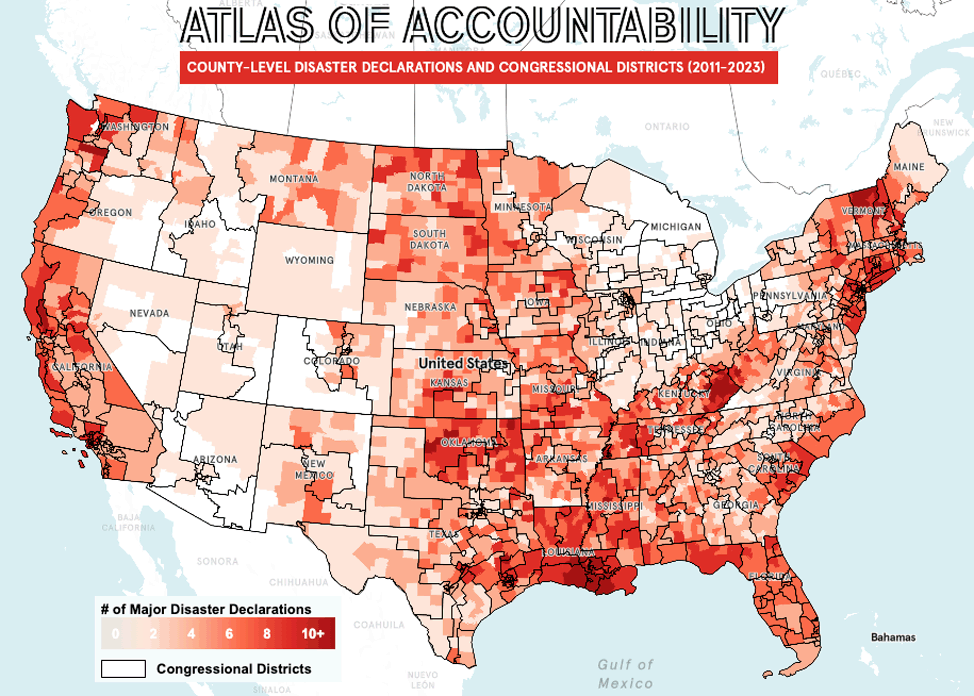
The tools above merge the physical and environmental risks from climate change with the societal risks that exacerbate weather and climate extremes. This approach provides the most complete picture of the dangers posed to a given community. If you want to consider the physical or environmental component on its own, take a look at these tools:
- An interactive map from The Climate Explorer (NOAA) allows you to explore predicted changes in U.S. temperature, precipitation, and high tide flooding.
- The 2023 National Climate Assessment has individual chapters detailing how climate change is expected to unfold for 10 U.S. regions.
- The American Communities Project has a non-interactive map of county-level climate risks for various hazards.
- Risk Factor from the nonprofit First Street Foundation provides a widely used, freely available tool for determining past, present, and future climate risk of an individual property. Type in an address to see on a one to 10 scale the risk for flood, heat, wildfire, wind, and air pollution hazards. Keep in mind that tools like this are controversial, though. A July 2024 study, National-Scale Flood Hazard Data Unfit for Urban RIsk Management, evaluated the First Street Foundation flood model with another flood model, and found about a “1 in 4 chance of models agreeing upon which properties are at risk”.
Stiff competition for livable places
If you do manage to find a more livable place to live, you may have plenty of competition from millions of others searching for the same thing. For example, Atlanta, which appears on Architectural Digest’s recent list of the top-10 most climate-resilient cities, faces steep challenges if it is to absorb the 1 million-plus climate refugees that could be headed there in the next 30 years. Water scarcity, deficient transportation and sewage infrastructure, social inequality, and lack of affordable housing head the list of issues for the city.
Climate change futurist Alex Steffen is one of the best at communicating the magnitude of the upheavals coming from the planetary crisis (I’m a subscriber to his excellent newsletter.) He recently commented:
But those homes, connected to systems less exposed to risk, where action to ruggedize is progressing, where institutions are functioning at a high level, where public goods and infrastructure are supported and well-managed, and where large numbers of desperate people are not overwhelming support systems — those homes will appreciate in value. Appreciate, I expect, a lot. A run on durability combined with a slow growth of housing supply will inevitably push those with less wealth out — leading to the bitter irony that young and/or poor people may find themselves among the climate-displaced, even when they’re living in some of the safest places on Earth.
The only real answer to this problem is a politics of urgent abundance. We must build at genuinely inclusive scales. If you live in a relatively safe place, and you don’t want it to be trapped in the amber of wealth, your town has to build enough housing (and workplaces and infrastructure and schools and so on) to meet a massive uptick in demand. It will need to go on building for decades. (I wrote a book about why building compact communities at scale is also a critical climate/sustainability solution.)
Not many prosperous towns are ready to do this. The ones that aren’t could quickly turn into enclaves of wealth. A lot of people will be left outside those gates when they close. Still, if you’re lucky or smart enough to get in, you and your family might find yourselves with some of the brightest futures around.
Money
Those with wealth will be much better positioned to weather the coming climate change storm. So it would be prudent now to begin financial planning for the coming planetary crisis; reducing the amount of debt you carry would be a good place to start. And if you have money tied up in fossil fuel companies, consider that their long-term business model must dim dramatically if our futures are to brighten.
Read: How can I make my retirement plan climate-friendly?
Related posts and resources
This is part four of a four-part series on U.S. climate change adaptation. The other parts:
Part one looked at a number of recent government adaptation efforts to prepare the U.S. for our new climate.
Part two looked at how far short U.S. climate change adaptation efforts fall from what is needed.
Part three is an essay giving my observations and speculations on how the planetary crisis may play out.


